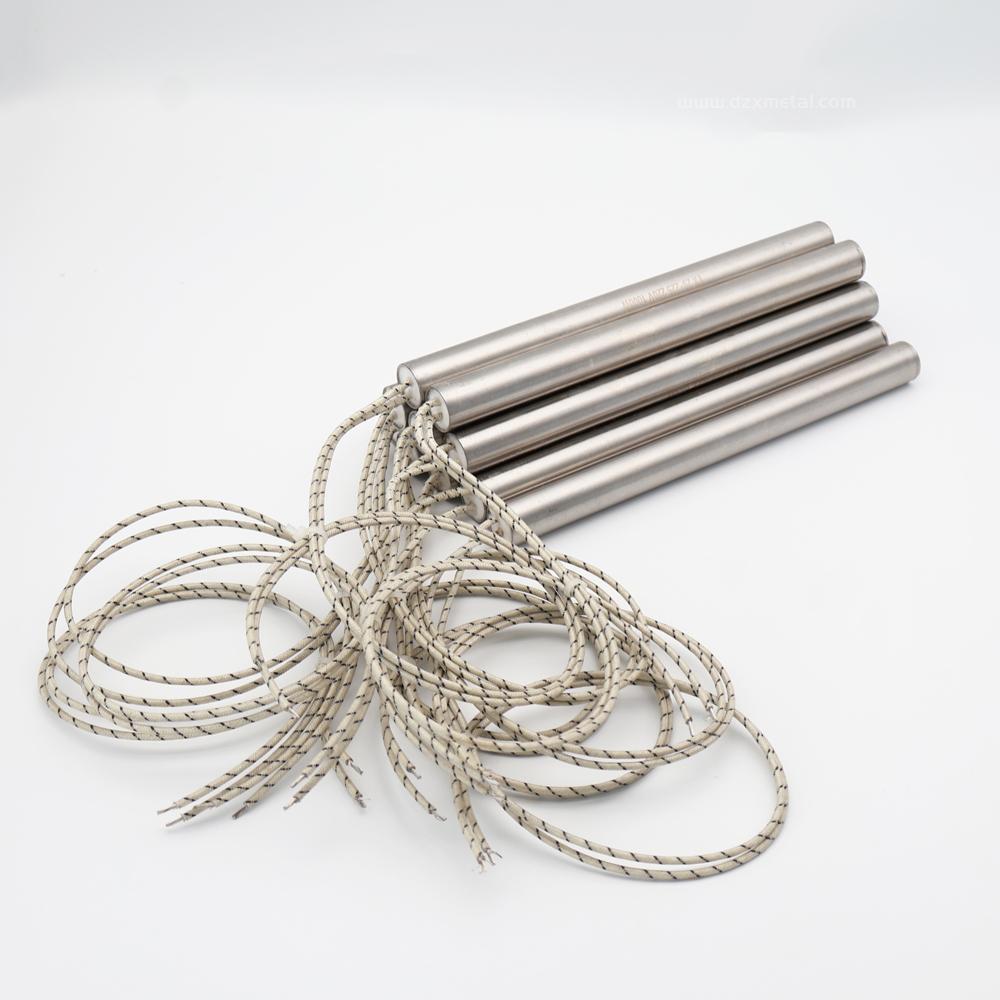
High Temperature 220V 110V 380V Cartridge Heater With Inner Wire For Cladding Machine
- Product Details
What is Cartridge Heater
Cartridge heater is a small electric heating device that usually comprises a metal outer casing, a heating element, and an insulating material (like magnesium oxide). Its main purpose is to transform electrical energy into thermal energy, effectively heating liquids, gases, or solid substances across a range of equipment and applications.
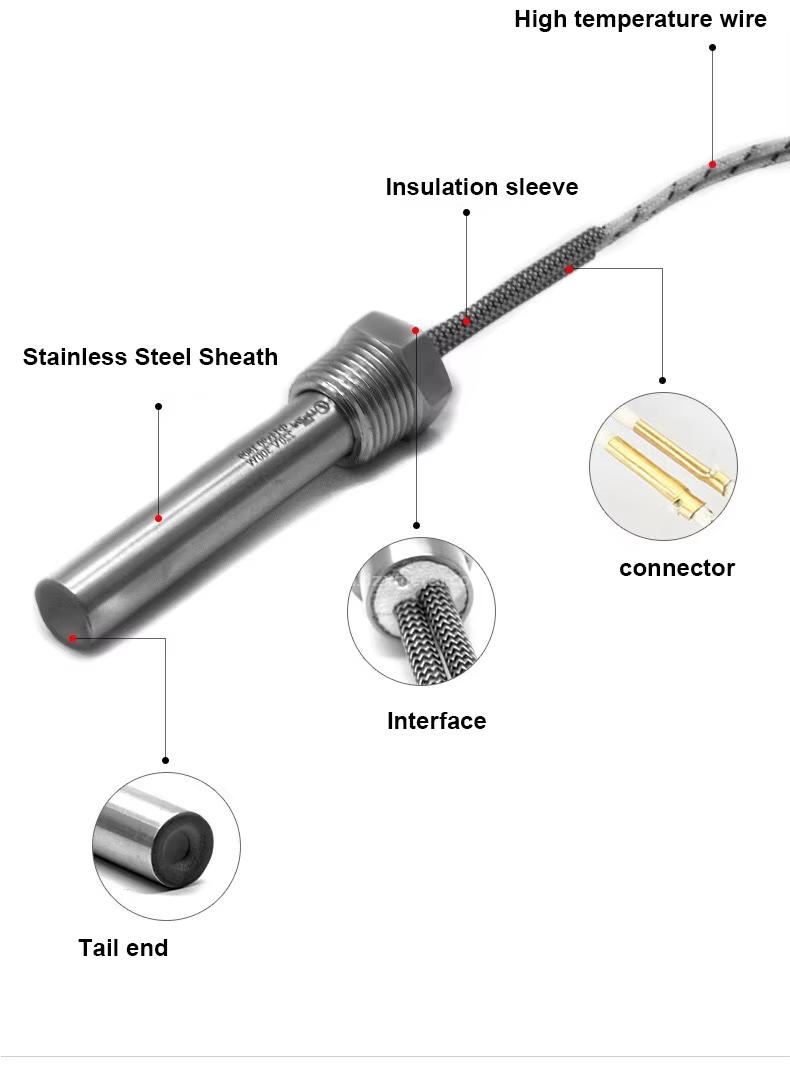
The components of a cartridge heater:
1. Metal Outer Sheath:
- Typically constructed from materials like stainless steel or aluminum, the outer sheath serves as a protective casing.
- It is designed to withstand high temperatures and corrosive environments, ensuring durability and longevity.
- The sheath often features a smooth finish to facilitate easy installation and cleaning.
2. Heating Coil:
- Made from high-resistance wire, such as nickel-chromium alloy, the heating coil is coiled tightly within the sheath.
- When electrical current passes through the coil, it generates heat due to resistance.
- The design of the coil can vary in terms of diameter and length, allowing for customization based on specific heating requirements.
3. Insulating Material:
- Magnesium oxide (MgO) is commonly used as an insulating material due to its excellent thermal conductivity and electrical insulation properties.
- It fills the space between the heating coil and the outer sheath, preventing short circuits and heat loss.
- The insulation helps maintain a uniform temperature across the heater, improving efficiency.
4. Terminals:
- The terminals are located at one end of the cartridge heater and provide a point for electrical connections.
- They can be designed for various connection types, including screw terminals, spade connectors, or lead wires.
- Proper terminal design ensures safe and reliable electrical connections.
5. Temperature Sensor (optional):
- Some cartridge heaters come equipped with built-in temperature sensors, such as thermocouples or thermistors.
- These sensors monitor the heater's temperature in real-time, allowing for precise temperature control.
- The integration of a temperature sensor enhances safety by preventing overheating and ensuring optimal performance.
Produce details 1:
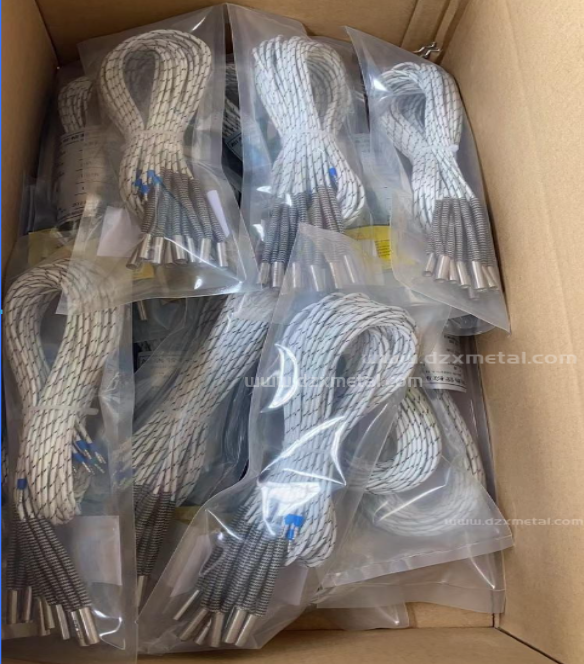
Produce details 2:
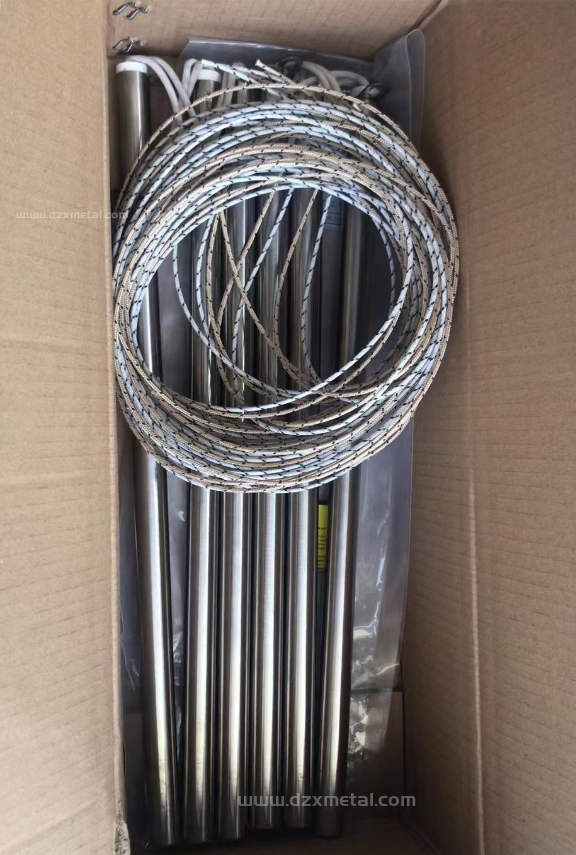
Produce details 3:
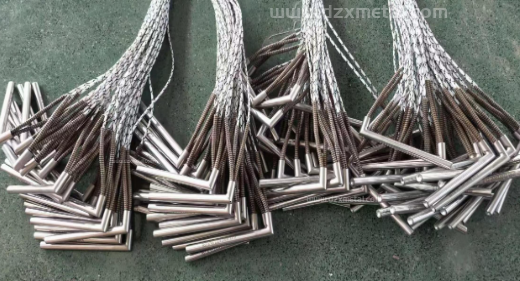
Steps for Selecting and Using a Cartridge Heater
Selecting a Cartridge Heater:
1. Determine Heating Requirements:
- Identify the material to be heated (liquid, gas, or solid) and the required temperature range.
2. Calculate Power:
- Calculate the necessary power (W) based on the volume of the material, its initial temperature, and the desired temperature.
3. Select Appropriate Size:
- Choose a heater with the right diameter and length based on the installation space and heating area.
- Ensure the heater can be fully inserted into the heating component for optimal heat transfer.
4. Material Selection:
- Select the appropriate metal sheath material (such as stainless steel or aluminum) to resist corrosion and high temperatures.
5. Insulation Material:
- Ensure the insulation material (like magnesium oxide) can withstand the operating temperature to prevent heat loss.
6. Temperature Control Options:
- Consider whether to integrate a temperature sensor for precise temperature control and monitoring.
Using a Cartridge Heater:
1. Installation:
- Install the heater in a dry, clean environment to avoid contamination affecting performance.
- Ensure the heater is fully inserted into the heating component to prevent exposure to air.
2. Electrical Connections:
- Ensure electrical connections are secure and meet safety standards to avoid short circuits or overloads.
- Use appropriate cables and connectors to ensure safe current transmission.
3. Temperature Monitoring:
- If using a temperature sensor, regularly check its accuracy to ensure the heater operates within a safe temperature range.
- Use a temperature controller or PID controller to adjust the heating process for improved efficiency and safety.
4. Regular Maintenance:
- Periodically inspect the heater for any damage or wear to ensure optimal performance.
- Clean the heater surface to prevent dirt buildup that could affect heat transfer.
5. Safety Operations:
- Avoid placing flammable materials near the heater to ensure a safe working environment.
- Prevent direct contact with the heater during operation to avoid burns.
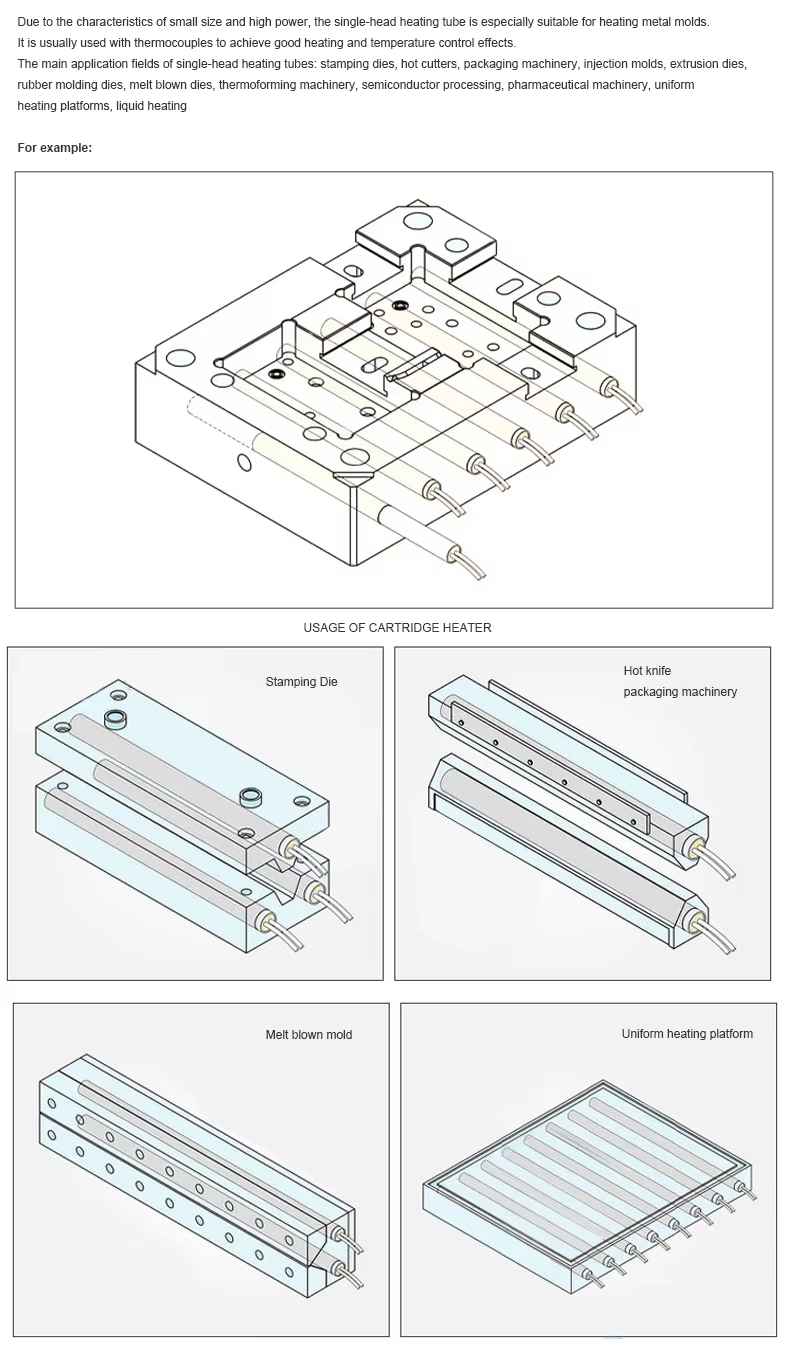

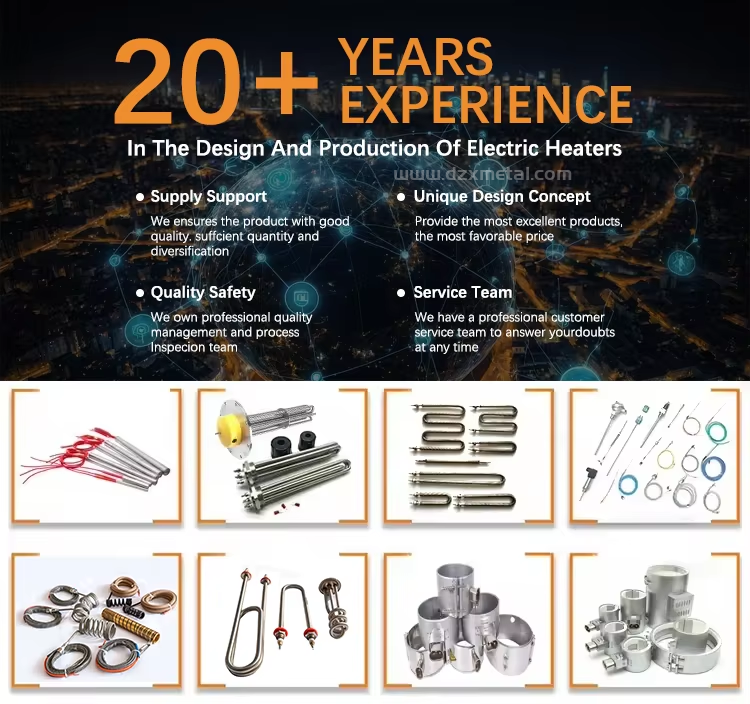
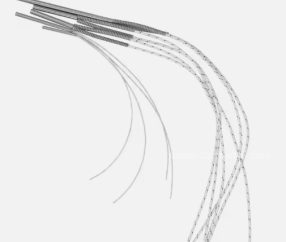
220V 380V 440V Heating Customized Power 230V 500w 380V 220V 2300W Cartridge Heaters
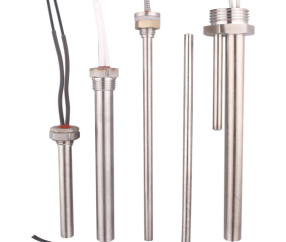
High Watt 12V 1000W Cartridge Heater With K Type Thermocouple And Screw Connection
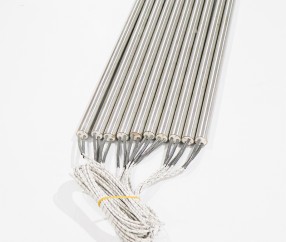
Electric Cartridge Heater 220V 380V with Incoloy Pipe for Bottle Capping Machine
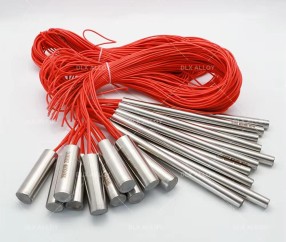
Customized Size 500W 220V Voltage Cartridge Heater With Stainless Steel Tube For Plastic Rubber Mold



